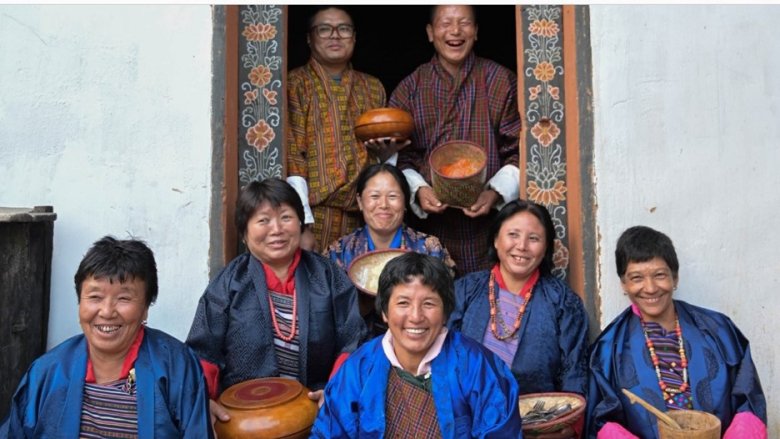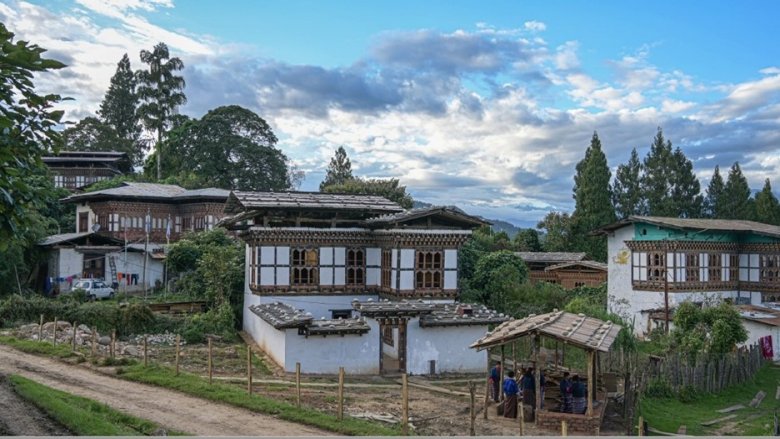In between sips of a delicious tea made with herbs from her garden, Madam Pem, the community head of the Nobgang village, shows the menu of their restaurant. “Some of these authentic dishes have rarely been tasted by the Bhutanese, for instance Nobgang Aezay Nyergum, which was served to the kings and high-ranking officials since the olden days when Punakha was Bhutan’s capital,” she says.
Pem, along with five other women and a man from her village, owns and manages Nobgang’s traditional restaurant and a Bed & Breakfast—sharing authentic tastes and experiences with the rest of Bhutan and the outside world.
The restaurant also gave a new life to one of the few remaining L-shaped kabu-darcham houses in Bhutan, built in the 18th century by hermits. The building—previously used as a health center by the government— was restored, adapted for new use, and handed over to the community. Behind it, the government and the community built a Bed & Breakfast, following Bhutan’s traditional architecture.
The social enterprises are part of the community’s strategy to revive the village’s vibrancy, which had been lost due to the migration of its youth to cities in search of less laborious jobs and improved living conditions. This is a trend that is shrinking Bhutan’s traditional villages and the rapidly growing its cities.
The restaurant and B&B surrounded by another traditional kabu-darcham houses typical of Nobgang. (Photo: Department of Culture, Bhutan)
A pilot project to revitalize villages
Concerned over this growth imbalance and increasing ‘loss of happiness’— which is Bhutan's main development goal— the government prioritized the revitalization of its traditional villages. Among many actions, in 2016, it approved a unique Cultural Heritage Bill that declared the entire country as a cultural landscape.
The government chose Nobgang as a pilot to test its novel approach. Led by the Department of Culture and with World Bank-support, a community driven process was put in place and an alliance was formed among the ministries and agencies working on urban planning, service delivery, tourism, trade, forestry, and agriculture at both the central and local levels. This brought together multidisciplinary expertise and optimized scarce financial and human resources.
After many consultations, a “Cultural Stewardship Plan” was prepared to guide the revitalization of Nobgang. Based on the community’s vision of becoming “a vibrant and self-sustained community by 2030”, three broad actions have been identified and are now under implementation, including (i) the physical regeneration of the village in a culturally sensitive and climate resilient manner, (ii) the value addition to its agricultural products, and (iii) the creation of income generating opportunities for women and youth.
Stefania Abakerli, Senior Urban Development Planner at the World Bank and the task team leader of the Buddhist Circuit Program, says that the pilot in Nobgang focused on fostering the village’s multiple assets, which are managed by women.
“Paradoxically, in Bhutan women’s ownership of land has limited their economic mobility and opportunities,” she says, adding that the participatory planning process along with community-led social enterprises addressed this issue by bringing new opportunities for women and youth right at their doorsteps.


